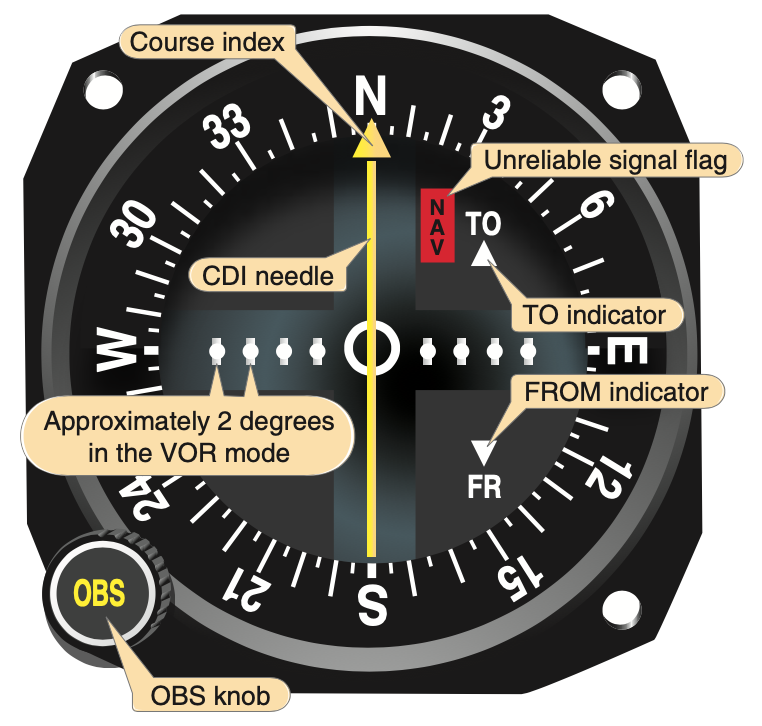Instrument Interpretation
VOR indicator instruments have at least the essential components shown in the instrument illustrated below

Omnibearing Selector (OBS): The desired course is selected by turning the omnibearing selector (OBS) knob until the course is aligned with the course index mark or displayed in the course window.
Course Deviation Indicator (CDI): The course deviation indicator (CDI) is composed of an instrument face and a needle hinged to move laterally across the instrument face. The needle centers when the aircraft is on the selected radial or its reciprocal. Full needle deflection from the center position to either side of the dial indicates the aircraft is 12° or more off course, assuming normal needle sensitivity. The outer edge of the center circle is 2° off course; with each dot representing an additional 2°.
TO/FROM Indicator: The TO/FROM indicator shows whether the selected course, if intercepted and flown, takes the aircraft TO or FROM the station. It does not indicate whether the aircraft is heading to or from the station.
Flags or Other Signal Strength Indicators: The device that indicates a usable or an unreliable signal may be an “OFF” flag. It retracts from view when signal strength is sufficient for reliable instrument indications. Alternately, insufficient signal strength may be indicated by a blank or OFF in the TO/FROM window.
The indicator instrument may also be a horizontal situation indicator (HSI), which combines the heading indicator and CDI. The combination of navigation information from VOR/Localizer (LOC) with aircraft heading information provides a visual picture of the aircraft’s location and direction. This decreases pilot workload especially with tasks such as course intercepts, flying a back-course approach, or holding pattern entry.
The VOR does not account for the aircraft heading. It only relays the aircraft direction from the station and has the same indications regardless of which way the nose is pointing. Tune the VOR receiver to the appropriate frequency of the selected VOR ground station, turn up the audio volume, and identify the station’s signal audibly. Then, rotate the OBS to center the CDI needle and read the course under or over the index. In the figure above 360° TO is the course indicated. If the VOR is set to the reciprocal of the intended course, the CDI reflects reverse sensing. To correct for needle deflection, turn away from the needle. To avoid this reverse sensing situation, set the VOR to agree with the intended course.
